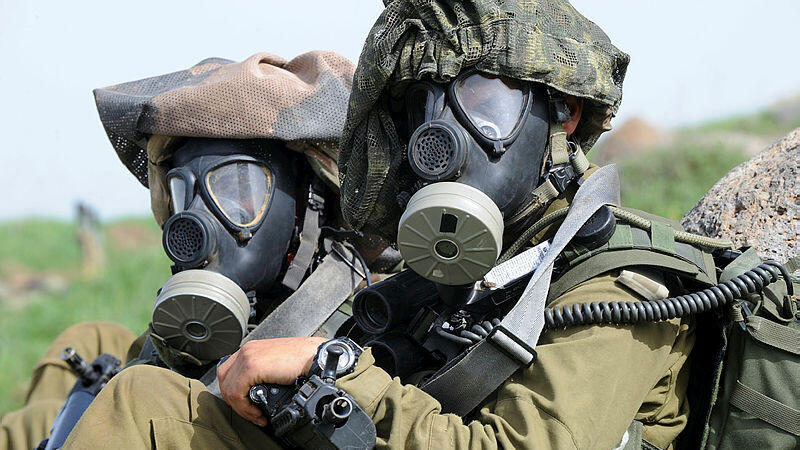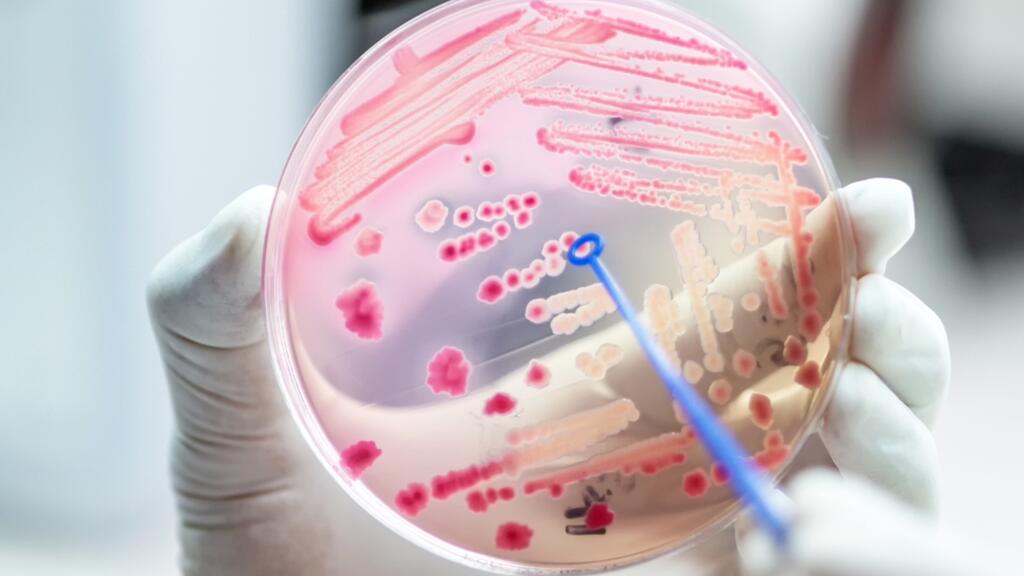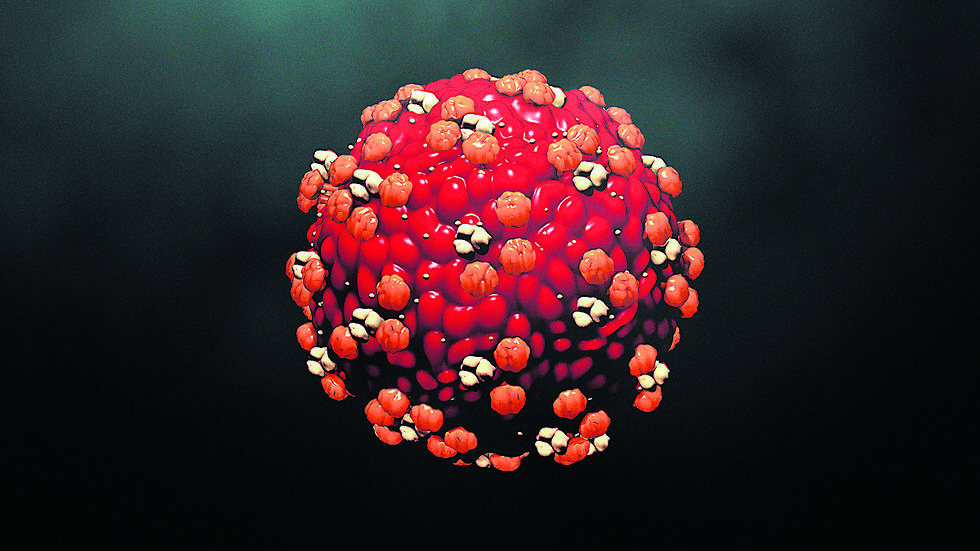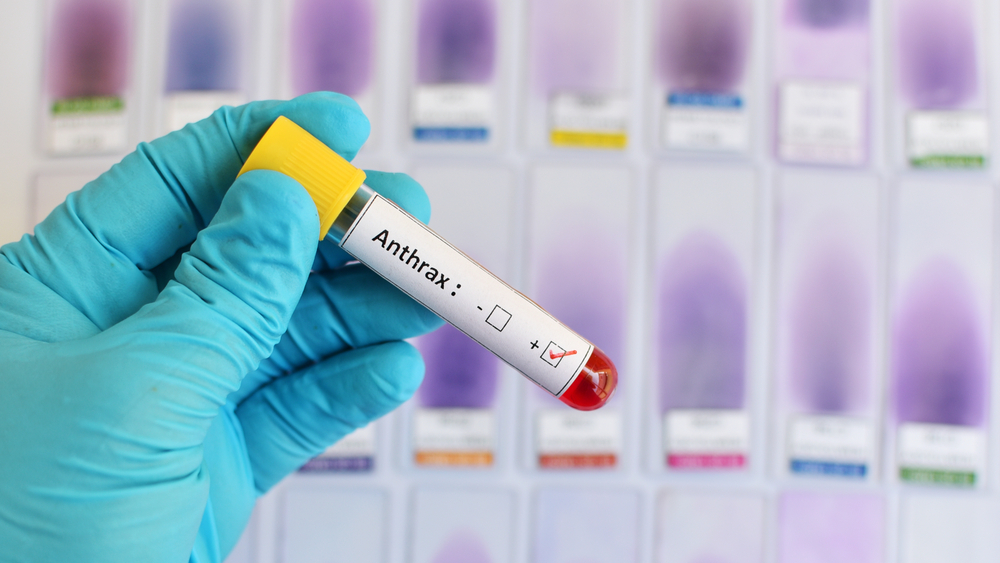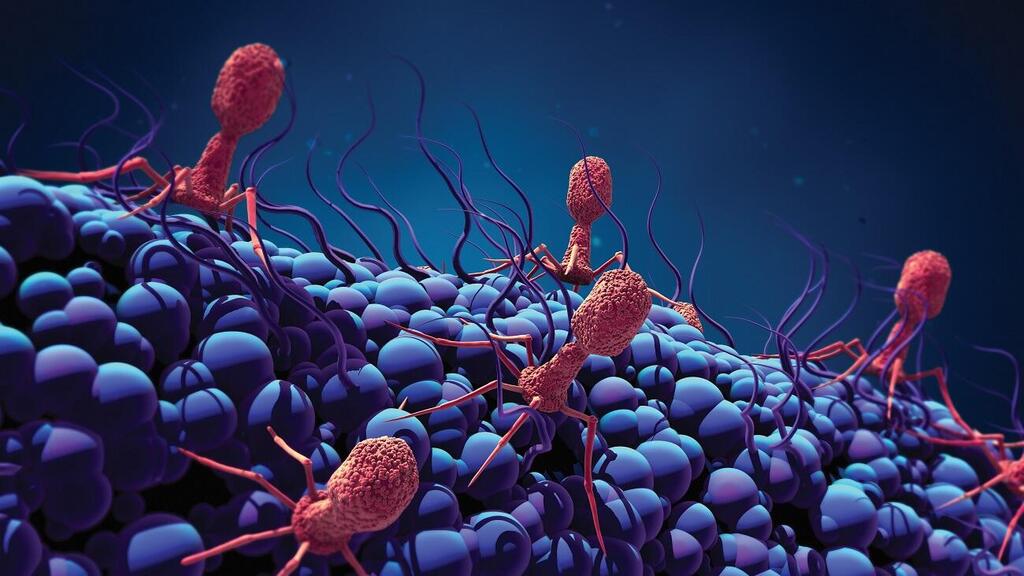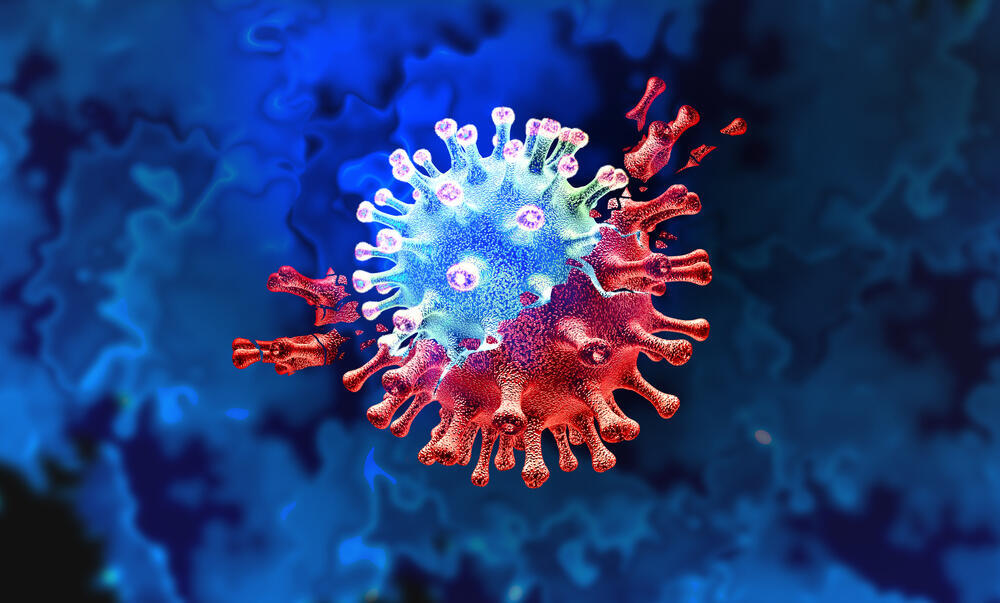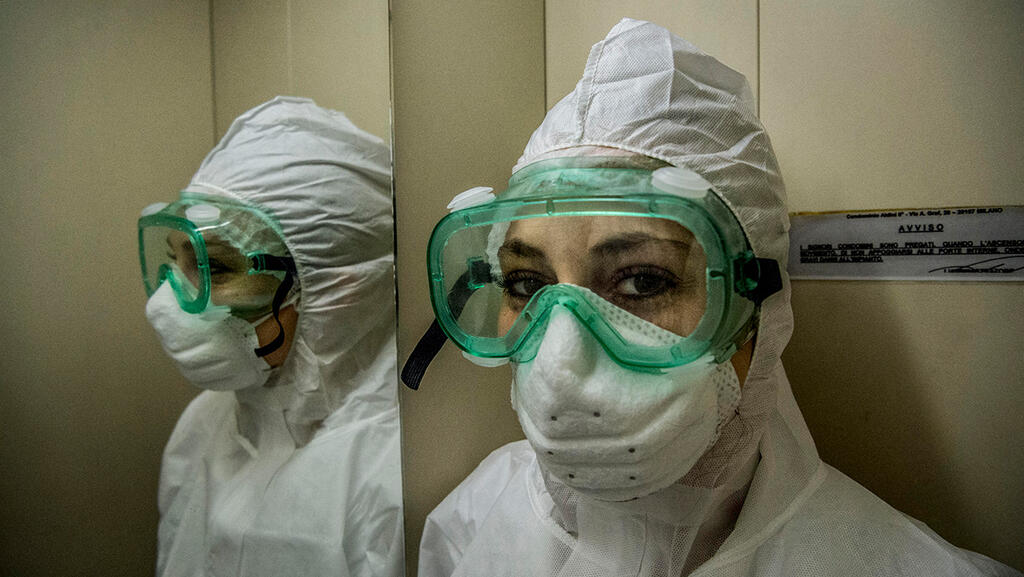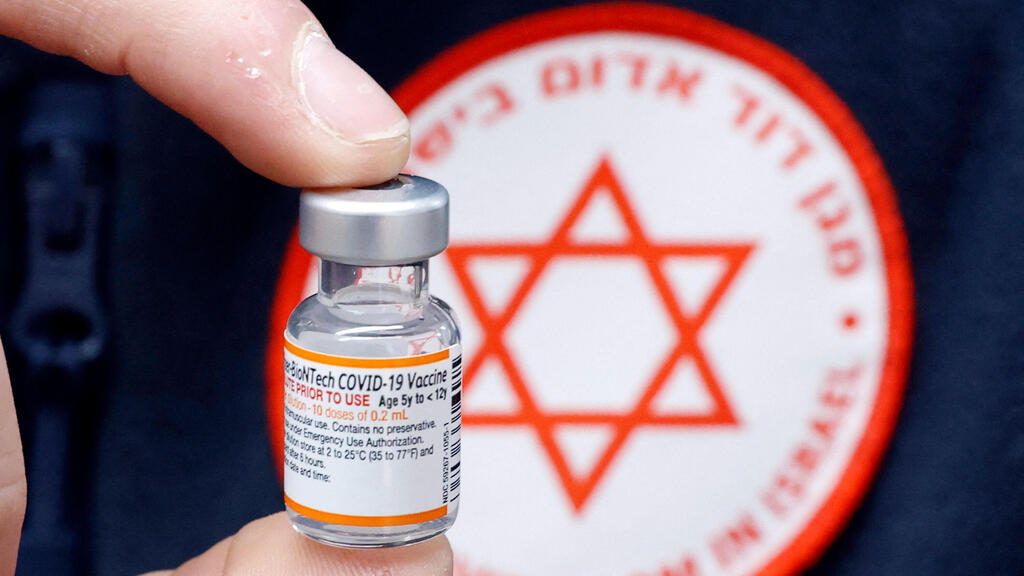The concept of a biological weapon is a well known one, though more likely as part of a movie plot or a television series, rather than as a real threat. What is a biological weapon in practice? Was it ever used? Did countries actually develop a warfare concept that depends on pathogens? Which diseases were considered suitable for use as biological weapons?
A biological weapon is defined as a weapon that makes use of pathogens - mainly bacteria and viruses - or toxins, which are toxic substances produced by microorganisms. The goal can be killing enemy soldiers and civilians, causing a disease that will neutralize them, or to create panic.
The manner of distribution can be diverse: release of pathogens from an airplane, contamination of potable water and food resources, release of infected animals that carry the pathogen and can transmit it to humans (such as mosquitoes or fleas) and more.
A biological weapon has a few key properties: first, beyond its direct effect, it has a devastating psychological effect - the damaged morale and panic that it is likely to induce in the attacked population can be just as harmful as the direct effect of the pathogen itself.
Next, unlike chemical weapons, nuclear weapons or any conventional weapons, the effects of a biological weapon can spread and can potentially be dangerous even in places distant from the attack area, through the spread of the disease.
And finally, an attack with biological weapons is very difficult to detect - it usually becomes apparent only after relatively many people become sick or die, and even then it often remains unclear how it happened and who is responsible.
Nevertheless, the use of biological weapons is traceable: first, the epidemiology of the epidemic will usually indicate that many people exhibited symptoms within a relatively short time period, in contrast to a singular or multiple separate cases, as would be expected in the case of a natural disease.
Second, the symptoms caused by a biological attack are sometimes different from the symptoms caused by the same pathogens when they spread naturally, which will immediately raise suspicion of biological warfare.
Biological warfare is not necessarily aimed at humans: spreading pathogens that target agricultural crops, or livestock, is also considered biological warfare, which targets the enemy’s food supplies and economy.
Epidemics have always been a source of great fear. Since ancient times to relatively modern times, they were perceived as a divine punishment and as an evil one cannot defend oneself against. Epidemics were especially common during times of war, since such times present favorable conditions for their spread.
The causes of epidemics were usually unknown, as in many cases was also the manner by which they spread, and thus in ancient times there weren’t many cases of intentional attempts to infect enemies in order to cause a plague. Even in cases where such practices were in use, they did not include direct spread of a pathogen, but were used in a more indirect manner.
That said, some documented cases were slightly reminiscent of a deliberate use of epidemics as a form of weapon, such as: forcing patients with an infectious disease to flee to enemy territories in order to spread the disease among the enemy’s population.
Most such cases were small scale events and remained relatively localized. Some such examples are historical documentations of well poisoning as well as of the placing of beehives that produced toxic honey from poisonous plants, in an attempt to poison advancing enemy troops. There were also cases of the catapulting of disease-infested corpses into besieged cities, in an attempt to spread diseases within.
The infamous "plague," also known as the Black Death in 14th century Europe, likely began as a biological warfare of sorts. When the Tatars lay siege to the city of Kaffa (present day Feodosiya), in the Crimean peninsula, they catapulted plague-infested corpses into the besieged city and the disease spread among its inhabitants.
The corpses may have not been the main cause of the epidemic, as it could have been caused by rats that went in and out of the city freely, transporting plague-infested fleas from the Tatars. After the siege ended with the city still standing, Italian merchants who were caught in the siege returned to Italy, and brought the plague with them. From Italy it spread rapidly throughout Europe, slaying between a quarter and a third of the European population in the following years.
After the discovery of microorganisms and the understanding of their roles as disease-causing agents, many countries invested in research and often even in development of the field of biological warfare. In World War I, biological warfare was used to some extent, although it was relatively insignificant compared to chemical warfare.
A major part of such warfare was targeted against livestock, especially horses, which were still the main vehicles of warring armies. Biological warfare, as well as chemical warfare, was banned for use in 1925 by the Geneva Convention, though the convention did not stipulate active measures for monitoring and surveillance to ensure that no country ventures to develop such weapons.
The main large-scale use of biological warfare was made by Japan in World War II. The Japanese used biological weapons in China, mainly plague and typhus. Hundreds of thousands of Chinese, soldiers and civilians alike, died as a result, in addition to thousands of additional captive civilians and soldiers, which were subjects of experiments by the Japanese.
One of the attacks, for example, was performed by bombarding a city with plague-infested fleas. Many of the Japanese scientists who took part in the development of these awful inventions were not prosecuted for war crimes and much of the Japanese knowledge on biological warfare ended up in the United States, similar to the Nazi scientists who provided a great deal of information to the Americans.
Since World War II there has been no proven use of biological weapons by any country or on the battlefield. There have been several incidents in which claims of the use of biological weapons have been made. For example, the U.S. accused North Korea of using biological weapons during the Korean War, and similar claims were also raised during the Soviet invasion of Afghanistan. However, these claims have not been proven and their credibility remains unclear.
Other large countries also developed biological weapons. The United Kingdom carried out research into anthrax during World War II and kept it as an offensive plan for many years that followed. The Soviet Union had an extensive biological weapons program during the Cold War, and China also possibly operated such a program in the past, although this does not seem to be the case today. Some claims exist as to the possibility that Russia, which inherited most of the Soviet Union’s military programs, currently continues operating a biological weapons program, although publicly available information regarding this matter is scarce.
Most of these programs have been discontinued, such as the American program, that stopped developing offensive measures during the 1960’s and destroyed its stockpiles of biological weapons. Current research in this field in the United States is being carried out only for defensive purposes. The United Kingdom discontinued the development of biological weapons back in the 1950s.
The Biological Weapons Convention, which was signed by the vast majority of the world’s countries and has been in effect since 1975, prohibits the development of biological weapons. Currently no country publicly admits to running a biological warfare program for offensive purposes or to possessing such weapons, and only a few countries admit to having previously maintained such programs.
Nonetheless, some concerns still exist that some countries, such as Iran, Russia and North Korea, maintain illegal and covert biological weapons programs. Suspicions have been raised in the past against Israel, but no evidence regarding the existence of an offensive biological weapons program was ever made public.
Many armies around the world are still preparing for the possibility that biological weapons will be used against them. Guidelines by the NATO alliance in the event of an unconventional attack that includes biological weapons, with details of possible pathogens that constitute potentially reasonable threats, can be found in this document.
Which diseases were considered as candidates to be used as a potential biological weapon? Naturally, not every disease can be used for such a dubious purpose. It is necessary to initially define the properties that such a disease should have. For example, would we want a lethal disease, or one that would simply neutralize those infected?
From a military point of view, for example, a sick enemy soldier is preferable to a dead one - both are unable to fight, but additional resources and expenses are required for the treatment of sick people. In addition, images of hospitals overflowing with casualties may induce a psychological effect of fear of the disease and decrease the enemy’s morale.
Other relevant criteria for the party developing such a weapon are, for example: does it matter how difficult it would be to treat the people infected? Would it be wise to use a disease that spreads from person to person, or would it be wiser to spread pathogens within a certain area in which they will infect only the people present, such as soldiers on a battlefield? Is it an interest to leave the area of pathogen dispersion compromised for a long period, or would it be preferable to have it cleared in a short time in order to be able to pass through it without protective gear?
All of the mentioned criteria affect the selection of the pathogen to be used for biological warfare. A wide variety of microorganisms, mainly bacteria and viruses, were assessed throughout history by different biological weapons programs. Such programs also considered the use of toxins, which are regarded as biological weapons since they are produced by microorganisms. Toxins do not reproduce and are not infectious, and are thus more similar to chemical weapons in their manner of application.
Surprisingly, and contrary to the norms common to works of fiction, most of the diseases considered are not very deadly, especially upon treatment, nor are they particularly contagious. This allows for better control of their use and prevents outbreaks of large-scale epidemics, which could also harm the attacker.
The common scenario of a highly contagious disease with mortality rates approaching 100% and with no effective treatment, is largely fictional. The two main exceptions are smallpox and plague: both are highly dangerous without treatment and highly contagious, though it should be noted that an effective antibiotics treatment currently exists against the plague-causing bacterium.
Among the other diseases that were considered for this dubious role of being used as a biological weapon, one of the better known and studied diseases is anthrax, and therefore warrants looking into. The reason for its popularity as a biological weapon is a combination of high lethality, especially resistant bacteria and low contagion rates. Thus, it is possible to infect a certain area with bacterial spores for a long period of time, decades and even more, and cause a deadly disease in a very localized manner.
A spore is the dormant state of the bacterium, in which it remains highly resistant to conditions such as heat and drought and can survive for many years. For example, spores of Botulinum bacteria, which produce especially deadly toxins and cause food poisoning, are one of very few organisms that can survive in honey, which is why feeding honey to babies is highly discouraged, since they can develop a disease as a result of the exposure.
When the spores are exposed to suitable conditions, they return to their active state and the bacteria reproduce. Spores of certain anthrax strains can survive for decades and still cause a disease upon entering the human body.
For Anthrax bacteria, the effective form of their dispersion is by the creation of aerosol drops that can be dispersed over the attacked area. Anthrax is transmitted naturally through contact with infected animals. This disease, termed “cutaneous anthrax”, is not particularly dangerous upon treatment.
In the case of biological warfare, those inhaling the spores will likely develop “respiratory anthrax” - a form of the disease that very rarely occurs naturally, and is significantly deadlier. The emergence of multiple simultaneous cases of respiratory anthrax is a clear sign of use of biological warfare. One of the most severe cases related to the use of biological weapons during the 20th century occurred in fact as an accident, in which anthrax spores were accidentally released from a factory in the Soviet Union, which was likely producing them for biological warfare.
Although anthrax is caused by a bacteria that is usually not resistant to antibiotics, antibiotic treatment is usually ineffective, as it must be administered prior to the appearance of symptoms, which is rarely done and thus fails to save the patient.
It should be noted that the spores are extremely durable and areas that were contaminated with anthrax spores remain contaminated for a very long time. During World War II the British army bombarded the small Scottish island of Gruinard with anthrax spores as part of a biological weapons experiment, to test the effectiveness of such an attack as a biological weapon.
It quickly became apparent that such an attack would render an area uninhabitable for a long time. The island remained contaminated and dangerous for any mammal for decades, until it was cleaned during the course of a very expensive and difficult decontamination effort.
Most diseases that were assessed as biological weapons do not have an effective treatment, especially those caused by viral pathogens, although some specific vaccines have been developed. For example, following the last major outbreak of the Ebola virus in Western Africa, a few years ago, a vaccine was developed against the disease, in addition to several methods of treatment.
Ebola has been considered as a biological weapon, and is especially popular in fictional works. Since it is a disease that is not naturally common, the general population is usually not vaccinated against it. Vaccines are administered mainly at times of need or to workers at risk, in contrast to formerly common childhood diseases, such measles, against which most of the population is usually vaccinated.
For many of the diseases that have been considered as biological weapons, the type of treatment depends on the causative agent (pathogen): for bacterial diseases, such as plague and cholera, there is usually an effective antibiotic treatment, although in some cases it’s important to administer the treatment as early as possible to ensure its effectiveness, as in the case of anthrax.
It is possible that bacterial strains designed to be used as a form of biological warfare will be genetically engineered to be resistant to different types of antibiotics. In such cases, the treatment may be more difficult and less effective.
Most viral diseases have no effective treatment, although most are not lethal. Some general antiviral medications, or a specific treatment such as in the case of the Ebola virus, may ease the patient’s. Antibiotics are ineffective against toxins, since toxins are not living pathogens and therefore do not multiply. Almost all dangerous toxins have no effective treatment, except for supportive care until the poisoning passes.
It is of note that vaccines exist against most of these dangerous diseases, though these are not commonly administered to the general public, since such diseases are rare and the chance of contracting them is very low. An interesting example is smallpox, which accompanied humankind for centuries, until it was completely eradicated, about 40 years ago, due to an extensive vaccination effort.
This obviates the need for administration of smallpox vaccines to the general public, as the virus only exists in two guarded laboratories in the world, which are found in the United States and in Russia.
So far we have discussed biological weapons programs at the level of countries and politics; however, many fear that the greatest source of danger is the possibility of intentional release of pathogens by a terrorist organization, or an accidental release by a research facility, as some have unfoundedly claimed with respect to the Covid-19 pandemic.
Normally, Facilities that work with dangerous pathogens are held to very strict standards and incidents of accidental infections with deadly diseases are very rare. Nonetheless, such cases have occurred in the past, such as the aforementioned anthrax incident in the Soviet Union.
Another severe and well-known incident occurred in 1978 and resulted in the world’s last documented case of death from smallpox. Under circumstances that remain unclear to this day, a leak at a laboratory that studied the virus at the University of Birmingham Medical School resulted in the infection of Jannet Parker, a medical photographer who worked in a room above the lab.
Parker died of the disease about a month after initial symptoms appeared. A comprehensive epidemiological examination indicated that she had not infected anyone with the virus, except for her mother, who had a very mild case of the disease.
The most famous case of biological terrorism attack was undoubtedly the 2001 anthrax incident in 2001. Anonymous people sent envelopes that containing anthrax spores to tens of recipients, including journalists and American government officials. In total, 22 people were infected with anthrax, half of them with the respiratory form and half with the cutaneous form.
Of the 11 who contracted respiratory anthrax, five died. All of the victims who contracted the cutaneous form of the disease have recovered. An intensive FBI investigation led to an American scientist who had worked for decades in anthrax research for the American government. He committed suicide prior to being arrested and the investigation was formally closed.
Another incident occurred when members of the Japanese cult Aum Shinrikyo tried to release anthrax spores in Tokyo in 1993, but no one was harmed, since the anthrax strain they used does not cause disease in humans. Members of this cult appeared in the limelight again two years later, following another terrorist attack in Tokyo, in which a nerve agent was released in the subway. Thirteen people died and thousands were injured in this attack.
The main goal of a terrorist organization is to spread panic among the attacked population. Use of a non-contagious pathogen would likely result in a limited number of casualties, which would not exceed the number of casualties of a conventional terrorist attack, although it will have a far more extensive psychological effect, such as the panic caused in the United States by unidentified letters that followed the 2001 anthrax envelopes attacks. However, it is much more difficult to execute such an attack, due to the difficulty of obtaining pathogens, their production in sufficient amounts as well as their effective spreading.
Another fear is that terrorists will be able to genetically engineer a dangerous virus or bacterium in a laboratory. Today it is relatively simple to obtain the genetic sequences (RNA or DNA) of many dangerous disease causing agents, and the concern that terrorist organizations will be able to produce the pathogens in a laboratory with relative ease, is quite real.
A significant cause for such concerns is the smallpox virus, which, as stated, is found only in two well-guarded laboratories in the world. However, it should be noted that although producing smallpox artificially is technically possible using the right equipment, this is not an easy task and quite it is unlikely that a terrorist organization will be able to successfully achieve this using an improvised laboratory. In contrast, a country with extensive bio-technological infrastructure may very well be able to succeed in such an endeavor.
In this article we have described biological weapons and the many dangers they present, as well as mentioned some incidents in which such weapons were utilized, even as late as the 20th century. Why, then, was this type of weapon not put to a wider use?
The answer can be divided into several factors. First, it is a brutal unconventional weapon, the use of which goes against all the rules of war accepted in the world today. As mentioned, such weapons are very difficult to use discreetly and in many cases the attacker is identified, which may result in a severe reaction - both by the attacked party as well as by the international community.
In addition, contrary to their popular presentation in the media, it is not so easy to use biological weapons. Most of the candidate diseases are (fortunately) not very contagious, and thus, causing a widespread epidemic is not simple and requires very effective and extensive initial dispersion of the pathogens.
Distribution via aerosol is also complicated, since it is necessary to produce droplets at the appropriate size for the aerosol to be effective - particles that are too small will not be absorbed effectively and particles that are too large will not reach the lungs and are easy to defend against. The spread of live organisms that serve as vectors of the disease, for example infected rats or fleas, is not as effective. This is probably one of the reasons why we have yet to witness a successful use of biological weapons by a terrorist organization.
Using a non-contagious disease does provide for better control of the outcome, but present multiple disadvantages. First, it must be spread extensively in the entire area of interest, which is usually not a simple task. Additionally, many pathogens, such as anthrax, contaminate the area long after their original dispersal, making them problematic, since the relevant areas cannot be populated by the attacker’s own soldiers.
At the bottom line, for countries, biological weapons may fill a rather narrow niche, and in many cases conventional weapons prove far more preferable, legal and moral considerations aside. As previously stated, many countries decided to discontinue their biological weapons development programs and to focus solely on defense against them.
For terrorist organizations, biological weapons are too difficult to apply effectively, although their psychological effects could still make them attractive for such groups. Such a weapon is undoubtedly easier to obtain compared to a nuclear weapon, and thus concerns regarding such a scenario still exist.
Content distributed by the Davidson Institute of Science Education


